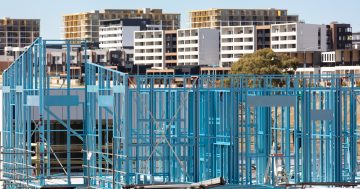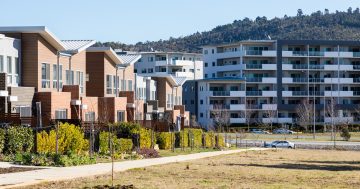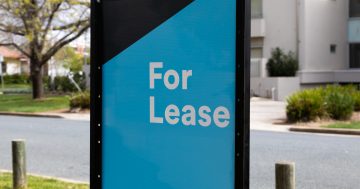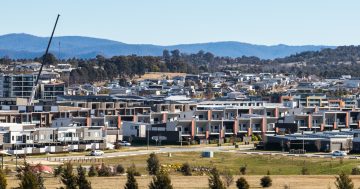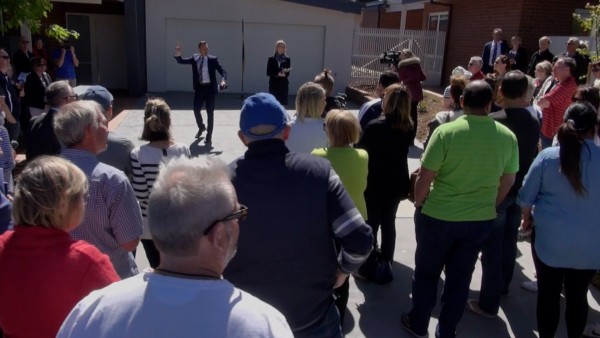
About 1240 out of 4400 listings have been on the market for over 180 days. Photo: File.
More than 1200 properties have sat on the Canberra property market for more than six months, contributing to one of the highest ever number of listings.
Property analyst and SQM Research founder Louis Christopher expects the market will remain unchanged until the Coalition achieves its much-vaunted budget surplus.
Mr Christopher says the territory’s housing market is still driven by events within the federal government and the market cannot be compared to Sydney and Melbourne markets which have started spring more brightly than Floriade.
“There is some movement, the market is in balance,” he says after studying listings, days on the market, asking prices and the rental market.
“Listings in Canberra are just off all-time highs. The previous high was about 5000 listings back in late 2018. It has improved since then a little, but the issue is we are seeing stock that has been on the market for more than 180 days, which is a bad sign. It means older stock is not moving and is building up,” Mr Christopher said.
“On our numbers, there are about 1238 listings [homes and units] out of a total of 4400 that have been on the market for over 180 days, so a quarter of the stock has been on the market for half a year.”
In August 2017, a total of 760 listings had been on the market for more than 180 days. In August 2018, the number was 789.
“When I look at what vendors are doing, it makes sense because over the past 12 months asking prices for units have actually risen, up by about 4.4 per cent,” Mr Christopher says. “On the other hand, house prices are almost unchanged at 0.1 per cent.”
Of the total 4399 properties, stock on the market for under 30 days is 1300 properties. At the same time last year, 1571 properties were on the market under 30 days and in August 2017, 1213 properties were on the market for under 30 days.
“Looking at the new listings, it is different to Sydney and Melbourne where there has been a shortage of new properties. Around 1300 new properties came on the market in the last 30 days [in Canberra]. That’s a fair amount, not an over or undersupply, that’s Canberra,” Mr Christopher says. “The concern for me is how old stock is not moving. It is increasing. There is definitely a trend of rising old listings.”
Canberra does well when the Federal Government is spending money, but the lack of spending is flowing through to the market, in Mr Christopher’s opinion.
“It seems to be the case that Canberra gets hurt because there is less consultancy work and departments might decide to go on a hiring freeze. I know Canberra has been diversifying away from the government, that has been through education, overseas student intakes. That helps, of course, but overall, Canberra’s economy is still very reliant on what the government does. My bet is, once the Liberals get their surplus, they can go out and trumpet their surplus. The year after that, if we have a slow economy, they will run a deficit. It could be good for Canberra.”
In the rental market, an over-supply of units peaked in early 2014 when the vacancy rate hit 2.5 per cent. “In the scheme of things with Canberra, that is quite high. Canberra once upon a time pre-GFC was running vacancies of 0.5 per cent – a very tight market.
“Over-supply created a big rise in vacancy rates that peaked around 2014. Since then, to September last year, vacancy rates were falling and they fell all the way back to 0.6 per cent. It became a landlords’ market, big time,” Mr Christopher says. “Since September 2018 they have been trending back up again, that 0.6 per cent has doubled to 1.2 per cent, still relatively tight. But I’m more concerned about the trend, why is it going up again? It is a bit odd, there is a new trend in terms of vacancies.”
He said the vacancies have already had an impact on rents which over the last quarter for houses had fallen by 2.2 per cent and sat at about $604 a week. Rents for units as at the last quarter were down by 0.1 per cent, averaging about $460 a week.
Overall it is a mixed market, Mr Chistopher advised.












